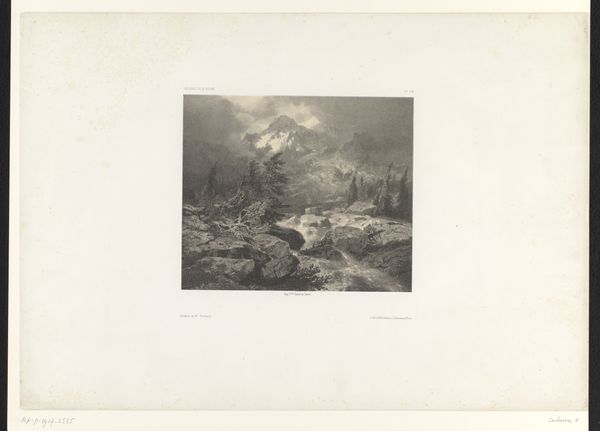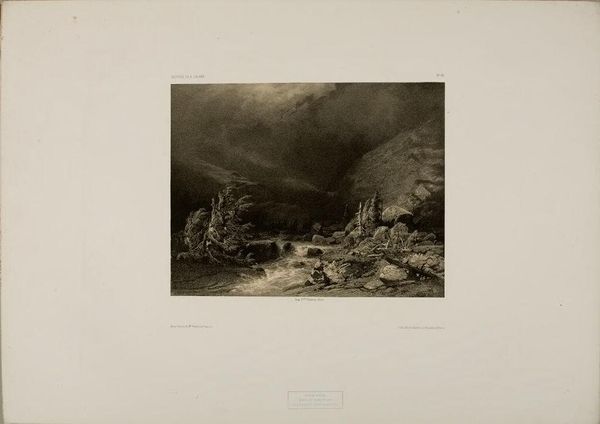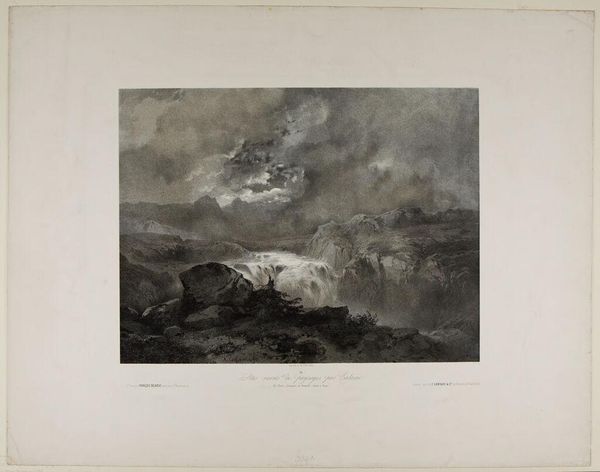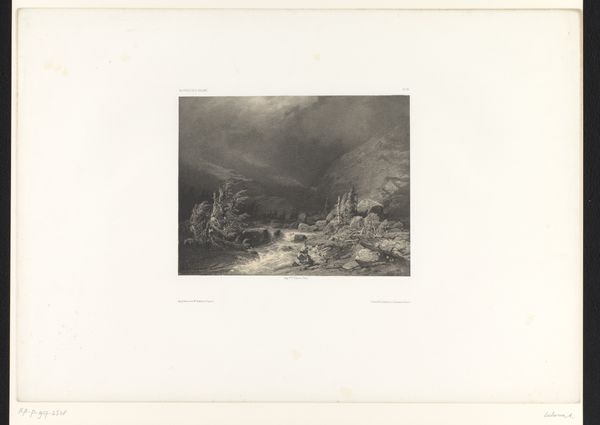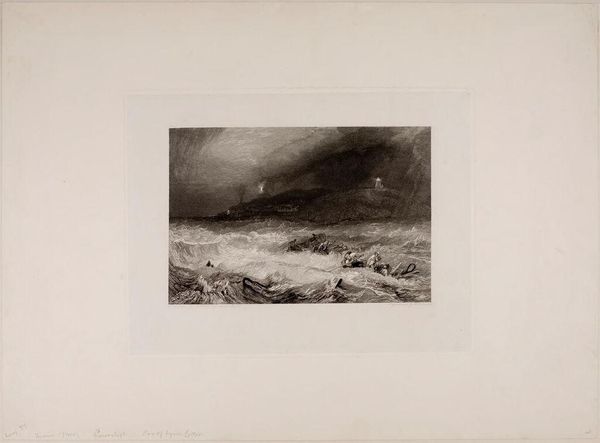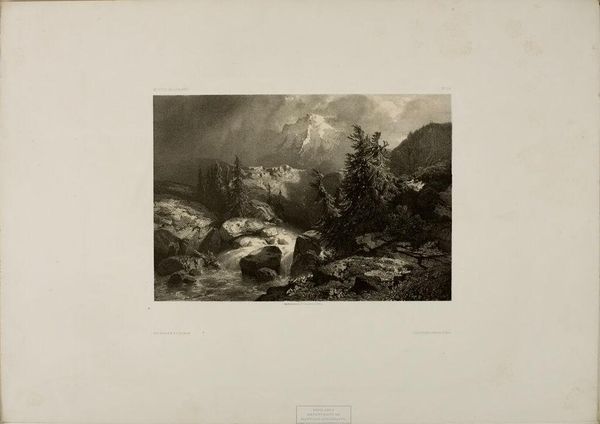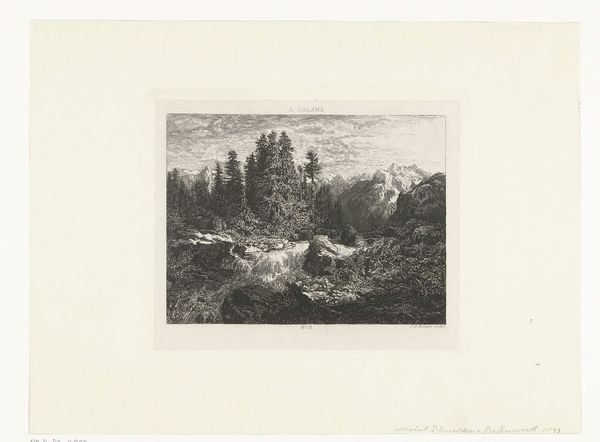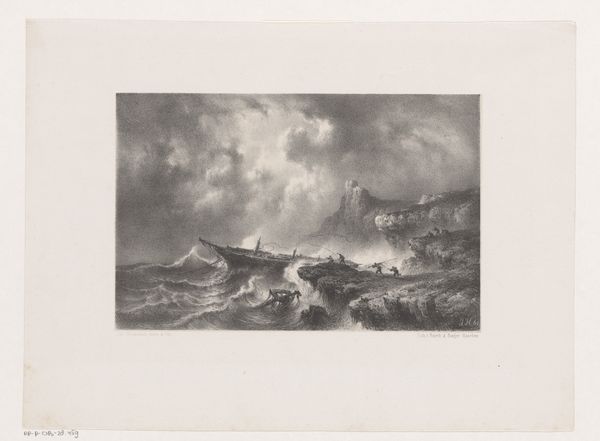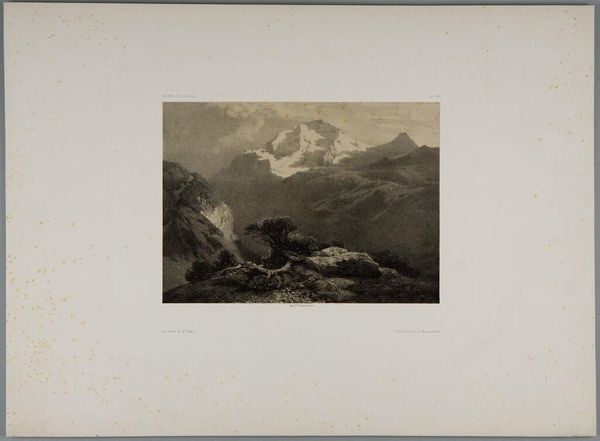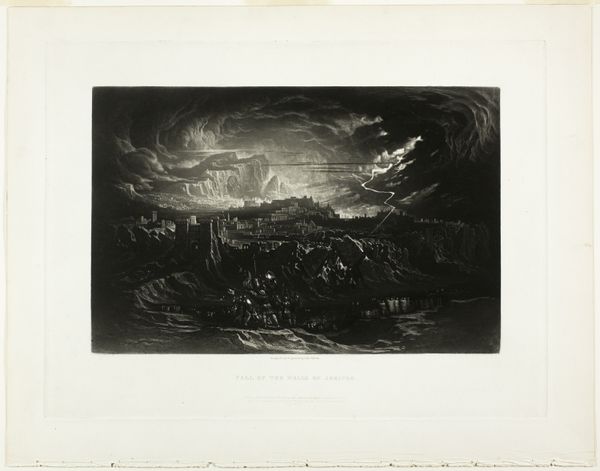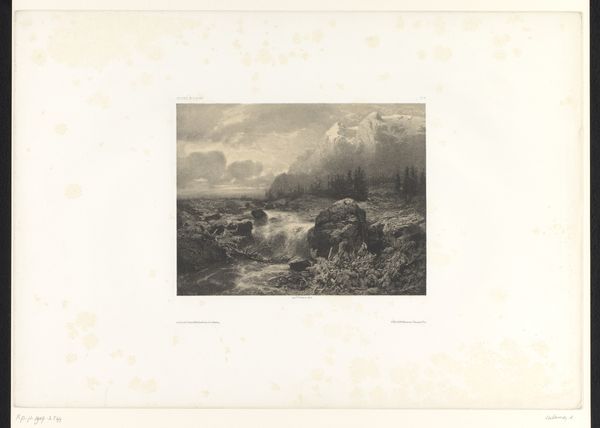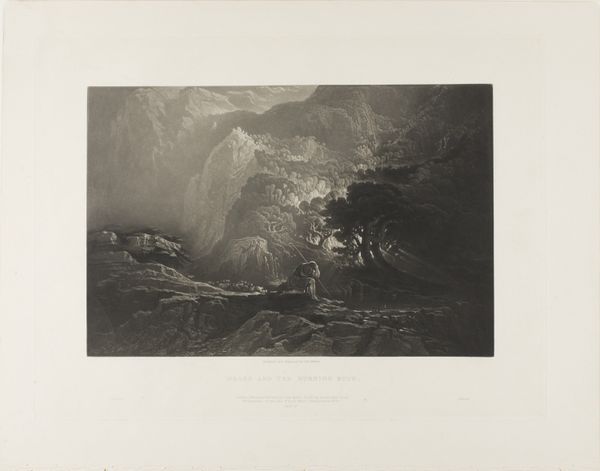
Copyright: CC0 1.0
Curator: Alexandre Calame's "Memories of Switzerland, Number 102" presents a captivating landscape. What are your initial thoughts? Editor: Immediately, I'm struck by its romantic intensity, a drama that feels intertwined with 19th-century anxieties about nature and national identity. Curator: Indeed. Calame, working in the early to mid-1800s, masterfully uses composition to evoke a sense of sublime grandeur. Note the sharp contrasts and dramatic light play. Editor: And the positioning of the turbulent water! It mirrors the societal currents of the time, reflecting industrialization and its impact on traditional Swiss life. This wasn't just about pretty landscapes; it was about preserving a cultural moment. Curator: I see it more as an exploration of form, texture, and the interplay of light and shadow—the aesthetic experience first. Editor: Art is never created in a vacuum. Understanding its roots is key to unlocking its relevance. Curator: Perhaps. But sometimes the art speaks for itself, regardless of context. Editor: And yet, that context inevitably shapes our perception. Curator: An interesting argument. Editor: Precisely.
Comments
No comments
Be the first to comment and join the conversation on the ultimate creative platform.
